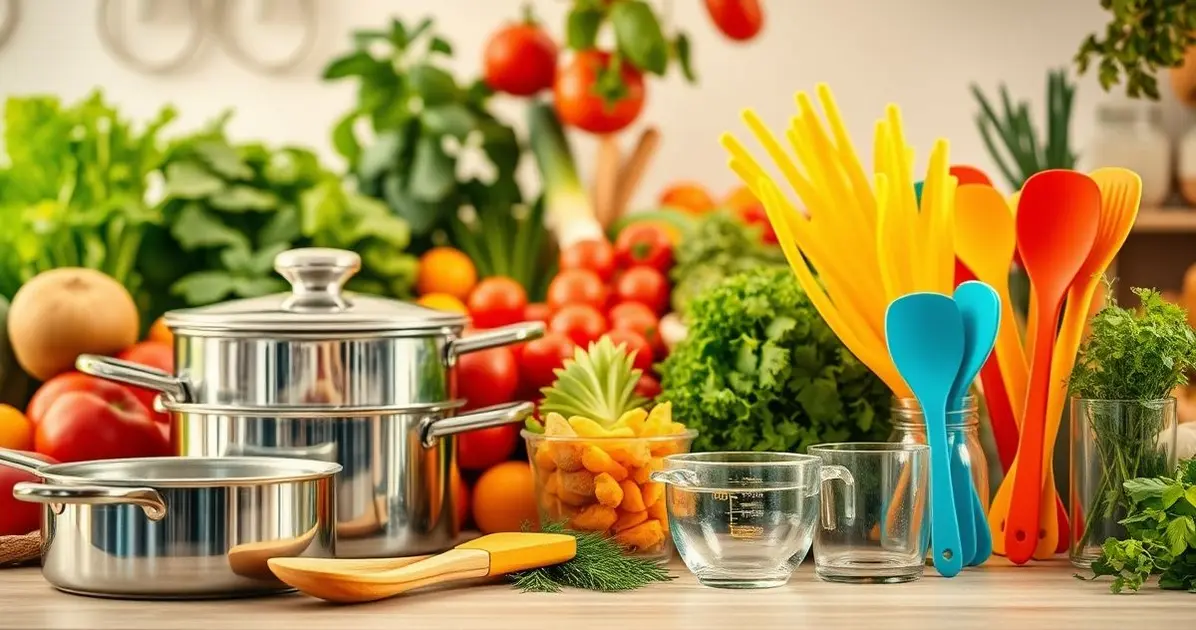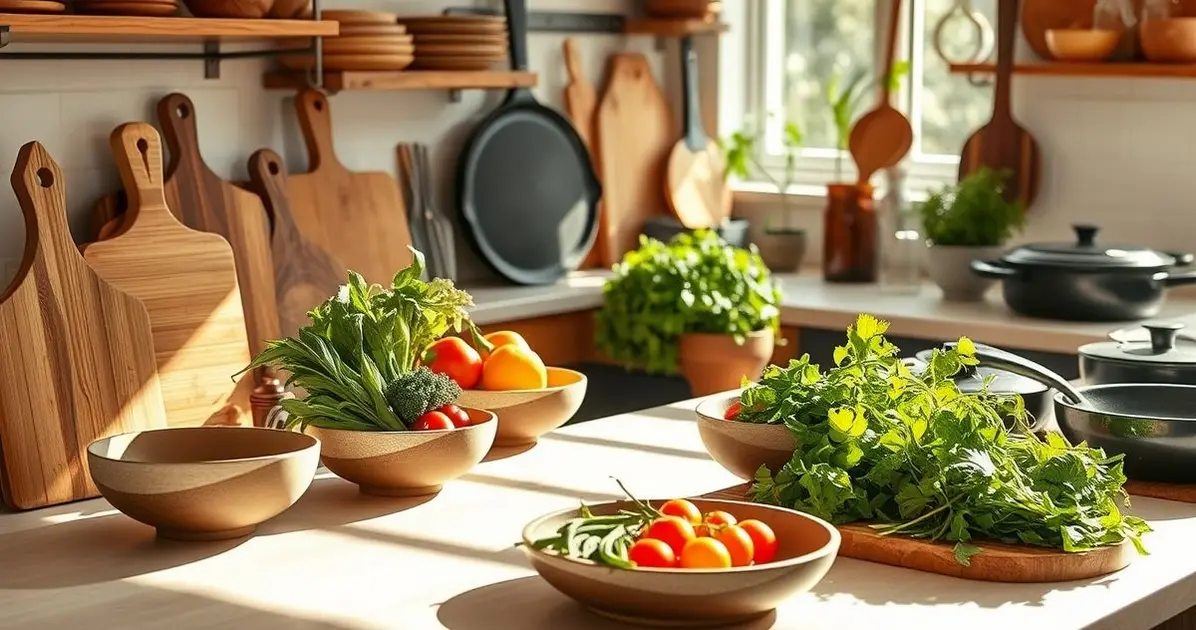Choosing non-toxic cooking utensils is essential for a healthy kitchen. These utensils ensure that no harmful chemicals leach into your food, making your cooking environment safer and more enjoyable.
What cooking utensils are non toxic

Non-toxic cooking utensils are made from materials like stainless steel, glass, bamboo, and silicone. These materials are free from harmful chemicals, ensuring that your food remains pure and safe from toxins. Make the switch to healthier options for a better cooking experience.
Best Materials for Non-Toxic Cooking Utensils
When it comes to non-toxic cooking utensils, the materials used play a crucial role in ensuring safety and health in the kitchen. Here are some of the best materials for non-toxic cooking utensils:
1. Stainless Steel: Stainless steel is a popular choice for cooking utensils due to its durability and resistance to rust and corrosion. Key benefits include:
- Non-Reactive: Stainless steel does not react with acidic or alkaline foods, making it safe for all types of cooking.
- Easy to Clean: It is dishwasher safe and easy to sanitize, ensuring a hygienic cooking environment.
- Longevity: Stainless steel utensils are built to last, providing a long-term investment for your kitchen.
2. Cast Iron: Cast iron cookware is not only non-toxic but also provides excellent heat retention and even cooking. Benefits include:
- Natural Non-Stick Surface: When properly seasoned, cast iron develops a natural non-stick surface that enhances flavor and texture.
- Iron Fortification: Cooking with cast iron can add trace amounts of iron to your food, which is beneficial for those with iron deficiencies.
3. Bamboo: Bamboo utensils are an eco-friendly and non-toxic option that is gaining popularity. Advantages include:
- Lightweight and Durable: Bamboo is strong yet lightweight, making it easy to handle in the kitchen.
- Antimicrobial Properties: Bamboo has natural antimicrobial properties, which help keep your cooking environment hygienic.
4. Silicone: Food-grade silicone is a versatile and safe material for cooking utensils. Its benefits include:
- Heat Resistance: Silicone can withstand high temperatures, making it suitable for various cooking methods.
- Flexible and Non-Stick: Silicone utensils are flexible, making them ideal for scraping and mixing, and they do not stick to food.
5. Glass: Glass utensils, such as measuring cups and mixing bowls, are non-toxic and safe for food preparation. Key features include:
- Non-Reactive: Glass does not leach chemicals into food and is safe for cooking and storage.
- Easy to Clean: Glass is easy to clean and can be safely used in the microwave and dishwasher.
6. Natural Wood: Wooden utensils made from hardwoods, such as maple or beech, are another safe option. Benefits include:
- Gentle on Cookware: Wooden utensils are non-abrasive and won’t scratch non-stick surfaces.
- Durability: With proper care, wooden utensils can last for many years.
In summary, choosing the best materials for non-toxic cooking utensils is essential for promoting health and safety in the kitchen. Stainless steel, cast iron, bamboo, silicone, glass, and natural wood all offer unique benefits that contribute to a healthier cooking environment. By selecting these materials, you can enjoy cooking while prioritizing your well-being and the health of your family.
Identifying Safe Brands and Products
Identifying safe brands and products for cooking utensils is crucial for ensuring that the tools you use in the kitchen are non-toxic and free from harmful chemicals. Here are some key tips to help you choose safe cooking utensils:
1. Look for Certifications: When shopping for cooking utensils, check for certifications that indicate the product is made from safe materials. Look for labels such as:
- BPA-Free: This label indicates that the product does not contain bisphenol A, a harmful chemical often found in plastics.
- FDA Approved: Products that are FDA approved have been tested for safety and are deemed safe for food contact.
- Food-Grade Materials: Ensure that the utensils are made from food-grade materials, such as food-safe silicone or stainless steel.
2. Research Brand Reputation: Before purchasing cooking utensils, research the brand’s reputation. Look for brands known for their commitment to safety and quality. Reading customer reviews and ratings can provide insights into the reliability of a brand.
3. Transparency in Sourcing: Choose brands that are transparent about their sourcing and manufacturing processes. Brands that provide information about where their materials come from and how their products are made are often more trustworthy.
4. Avoid Unknown or Generic Brands: While some generic brands may offer lower prices, they often lack the safety testing and quality assurance of well-known brands. It’s advisable to invest in reputable brands that prioritize safety in their products.
5. Check for Ingredient Lists: For materials like silicone or plastics, check the ingredient lists when available. Avoid products that contain harmful additives or fillers that may compromise safety.
6. Seek Recommendations: Ask friends, family, or culinary professionals for recommendations on safe brands and products. Personal experiences can provide valuable insights into which brands are trusted and reliable.
In summary, identifying safe brands and products for cooking utensils involves looking for certifications, researching brand reputation, and being cautious about ingredient lists. By following these guidelines, you can ensure that your cooking tools are non-toxic and contribute to a healthy cooking environment in your kitchen.

Benefits of Sustainable Cooking Utensils
The benefits of sustainable cooking utensils extend beyond personal health and safety; they also contribute positively to the environment and promote responsible consumption. Here are some key advantages of choosing sustainable cooking utensils:
1. Environmental Impact: Sustainable cooking utensils are typically made from eco-friendly materials, such as bamboo, recycled metals, or biodegradable plastics. By opting for these materials, you help reduce the demand for non-renewable resources and minimize environmental pollution associated with traditional manufacturing processes.
2. Reduced Chemical Exposure: Many sustainable utensils are free from harmful chemicals, such as BPA, phthalates, and other toxic additives commonly found in conventional plastics. This reduction in chemical exposure promotes a healthier cooking environment and ensures that no harmful substances leach into your food.
3. Durability and Longevity: Sustainable cooking utensils are often designed to be durable and long-lasting. Materials like stainless steel and bamboo are not only environmentally friendly but also resistant to wear and tear. Investing in high-quality sustainable utensils can save you money in the long run, as they do not need to be replaced frequently.
4. Supporting Ethical Practices: Purchasing sustainable cooking utensils often supports companies that prioritize ethical sourcing and fair labor practices. By choosing products from responsible brands, you contribute to a more equitable supply chain and promote social responsibility.
5. Enhancing Culinary Experience: Sustainable cooking utensils can enhance your culinary experience by providing tools that are not only functional but also aesthetically pleasing. Many sustainable materials, such as bamboo and natural wood, offer a unique and attractive look that can elevate your kitchen decor.
6. Encouraging Conscious Consumption: Choosing sustainable utensils encourages consumers to be more mindful of their purchasing decisions. This consciousness can extend beyond cooking tools to other areas of life, fostering a more sustainable lifestyle overall.
In summary, the benefits of sustainable cooking utensils encompass environmental impact, reduced chemical exposure, durability, support for ethical practices, enhanced culinary experiences, and encouragement of conscious consumption. By opting for sustainable options, you can create a healthier kitchen environment while contributing to a more sustainable future.
Tips for Maintaining Your Cooking Utensils
Maintaining your cooking utensils is essential for ensuring their longevity, safety, and performance in the kitchen. Here are some practical tips to help you care for your cooking tools:
1. Regular Cleaning: Keep your cooking utensils clean to prevent the buildup of food particles and bacteria. Wash utensils with mild soap and warm water after each use. For wooden utensils, avoid soaking them in water to prevent warping and cracking.
2. Proper Drying: After washing, make sure to dry your utensils thoroughly. For metal and silicone utensils, this helps prevent rust and mold growth. For wooden utensils, air drying is best; avoid placing them in the dishwasher, as the heat can damage the wood.
3. Avoid Harsh Chemicals: Steer clear of abrasive cleaners and harsh chemicals that can damage the surface of your utensils. Instead, use gentle cleaning agents and soft sponges to maintain their integrity.
4. Store Properly: Store your cooking utensils in a way that prevents damage. For example, use utensil holders or drawers to keep them organized and avoid scratches. Avoid stacking metal utensils on top of one another to prevent scratching and denting.
5. Inspect for Wear and Tear: Regularly check your utensils for signs of wear and tear. Look for cracks, chips, or discoloration, especially in wooden and plastic utensils. If you notice any significant damage, it’s best to replace the utensil to avoid potential health risks.
6. Season Wooden Utensils: For wooden utensils, consider applying food-safe mineral oil periodically to keep the wood hydrated and prevent it from drying out. This helps maintain their appearance and prolongs their lifespan.
7. Follow Manufacturer Guidelines: Always refer to the manufacturer’s care instructions for specific cleaning and maintenance recommendations. Different materials may require unique care methods to ensure longevity.
In summary, maintaining your cooking utensils involves regular cleaning, proper drying, avoiding harsh chemicals, and storing them correctly. By following these tips, you can ensure that your cooking tools remain in excellent condition, enhancing your cooking experience and promoting a safe kitchen environment.
Conclusion
In conclusion, maintaining your cooking utensils is vital for ensuring their longevity, safety, and effectiveness in the kitchen. By implementing regular cleaning routines, proper drying techniques, and careful storage practices, you can significantly extend the life of your utensils and enhance your cooking experience.
Being mindful of the materials used in your utensils and following specific care instructions will help prevent damage and ensure that they remain safe for food preparation. Additionally, inspecting your utensils regularly for wear and tear can help you identify when it’s time to replace them, further promoting a safe cooking environment.
By taking these maintenance tips to heart, you not only protect your investment in quality cooking tools but also foster a healthier and more enjoyable cooking space. Ultimately, well-maintained utensils contribute to better meal preparation and a more satisfying culinary experience.
FAQ – Frequently Asked Questions about Maintaining Cooking Utensils
How should I clean my cooking utensils?
Wash your cooking utensils with mild soap and warm water after each use. Avoid abrasive cleaners that can damage the surface.
How can I prevent my wooden utensils from cracking?
Avoid soaking wooden utensils in water and air dry them after washing. Additionally, apply food-safe mineral oil periodically to keep the wood hydrated.
What is the best way to store cooking utensils?
Store cooking utensils in a utensil holder or drawer to keep them organized and prevent scratches. Avoid stacking metal utensils to prevent damage.
How often should I inspect my cooking utensils?
Regularly check your utensils for signs of wear and tear, such as cracks or chips, especially in wooden and plastic utensils.
Can I put my metal utensils in the dishwasher?
While many metal utensils are dishwasher safe, it’s best to check the manufacturer’s guidelines. Hand washing is often recommended to prolong their life.
What should I do if my cooking utensils show signs of wear?
If you notice significant damage, such as cracks or discoloration, it’s best to replace the utensil to avoid potential health risks.
See more
Discover plenty of easy and delicious recipes you can make at home, from hearty dinners to indulgent desserts and wholesome breakfasts.




